Chile de Arbol has a Scoville Heat Unit (SHU) range of 15,000 to 65,000, placing it in the medium-to-high heat category for chili peppers. This makes it significantly hotter than jalapeños (2,500-8,000 SHU) but milder than habaneros (100,000-350,000 SHU).
Scoville Scale Comparison
| Pepper | Scoville Range |
|---|---|
| Bell Pepper | 0 SHU |
| Jalapeño | 2,500 – 8,000 SHU |
| Serrano | 10,000 – 23,000 SHU |
| Chile de Arbol | 15,000 – 65,000 SHU |
| Habanero | 100,000 – 350,000 SHU |
| Ghost Pepper | ~1,000,000 SHU |
Flavor Profile: More Than Just Heat
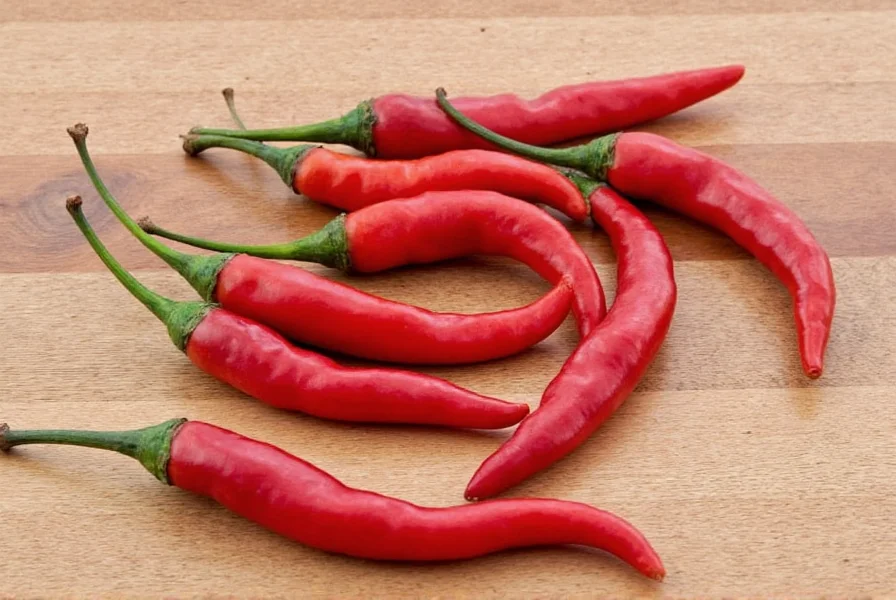
While known for its heat, chile de arbol also offers a complex flavor profile. Fresh peppers have a grassy, slightly vegetal taste. When dried and toasted, they develop nutty, earthy depth that complements salsas, soups, and marinades beautifully.
How to Enhance Its Flavor
- Toasting: Lightly toast whole dried chiles in a dry skillet until fragrant (about 30 seconds per side). Avoid burning!
- Rehydrating: Soak dried chiles in hot water for 15–20 minutes before blending into sauces.
- Roasting: For an intense smokiness, roast chiles over an open flame or broiler until blistered.
Cooking with Chile de Arbol: Tips & Tricks
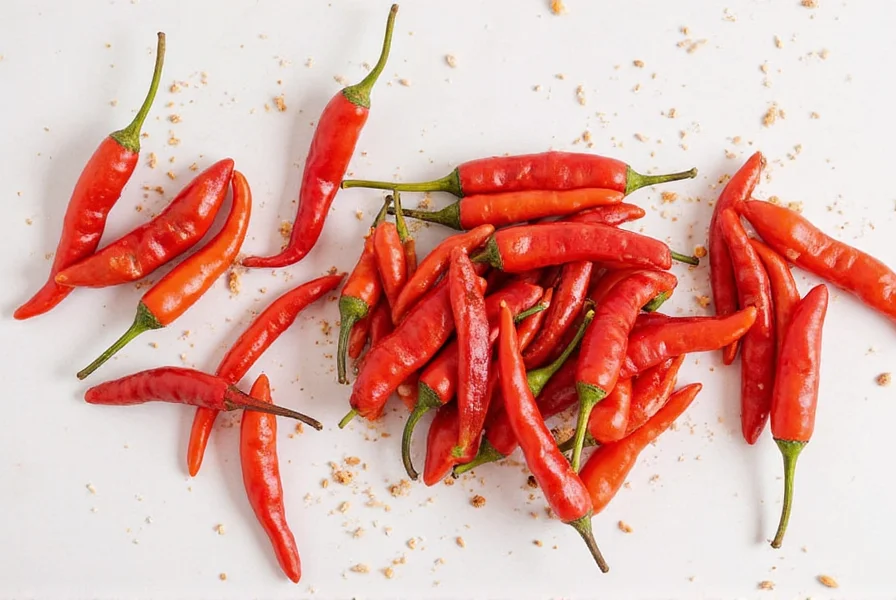
Whether using fresh or dried, these tips maximize flavor and heat control:
Top 5 Cooking Tips
- Start Small: Remove seeds and ribs for milder heat; they contain most capsaicin.
- Infuse Oil: Steep dried chiles in hot oil for a versatile chili oil for noodles or grilled meats.
- Blend into Salsas: Combine toasted and rehydrated chiles with tomatoes, garlic, and lime for vibrant red salsa.
- Add to Soups: One dried chile adds complexity to slow-cooked dishes like posole or mole.
- Grind into Powder: Dry roast and grind for sprinkling on tacos, roasted vegetables, or popcorn.
Buying Guide: Picking the Perfect Pods
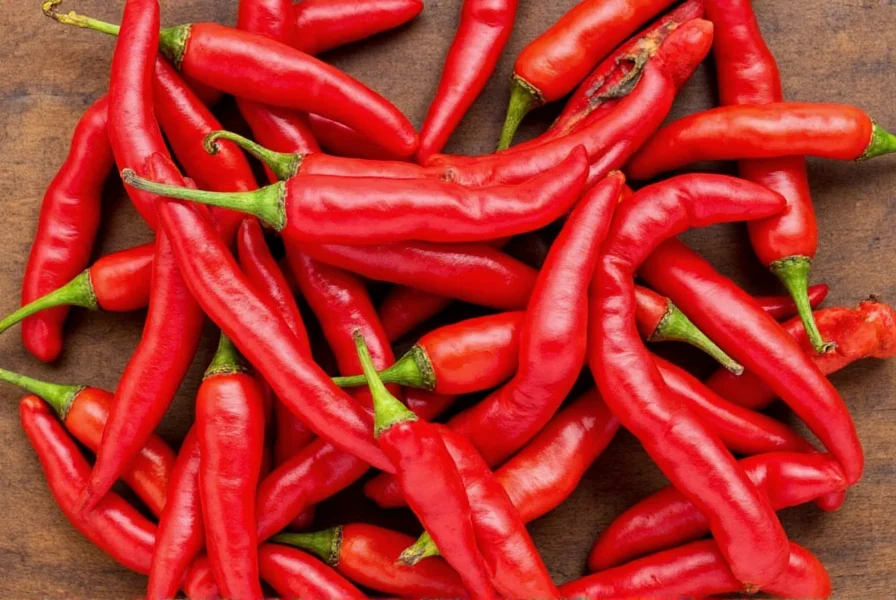
What to Look For
- Fresh Chiles: Vibrant red color, firm texture, no wrinkles or soft spots.
- Dried Chiles: Deep red color, slight flexibility when bent (not brittle), no mold or discoloration.
- Packaging: Sealed bags or containers to preserve freshness.
| Product | Features | Best For |
|---|---|---|
| MexGrocer Chile de Arbol Pack | Organically grown, sun-dried, vacuum-sealed for freshness | Home cooks wanting authentic flavor and convenience |
| La Costeña Chile de Arbol Whole | Premium grade, traditionally dried, available in bulk | Chefs and food enthusiasts looking for restaurant-quality pods |
| Amigos Foods Chile de Arbol Crushed | Crushed form for instant spice boost | Quick cooking, seasoning blends, or sprinkling over snacks |
Frequently Asked Questions
How hot is chile de arbol on the Scoville scale?
Chile de Arbol registers between 15,000 and 65,000 Scoville Heat Units (SHU), placing it in the medium-to-high heat range. This makes it significantly hotter than jalapeños (2,500-8,000 SHU) but milder than habaneros (100,000-350,000 SHU). Heat varies based on growing conditions, with some specimens reaching the higher end of the range.
Is chile de arbol hotter than cayenne pepper?
Chile de Arbol and cayenne have overlapping heat ranges, but chile de Arbol tends to be slightly hotter on average. Cayenne typically ranges from 30,000-50,000 SHU, while chile de Arbol ranges from 15,000-65,000 SHU. Flavor-wise, chile de Arbol has a more complex, nutty profile when toasted compared to cayenne's sharper heat.
Can I substitute chile de arbol for other dried chilies?
Yes, but adjust for heat and flavor. Good substitutes include cayenne (similar heat, different flavor) or a combination of guajillo (for flavor) and a smaller amount of Thai chili (for heat). Start with less than the recipe calls for and adjust to taste. Chile de Arbol works well in recipes calling for árbol, pequín, or bird's eye chili applications.
How can I reduce the heat of chile de arbol in my cooking?
To reduce heat: 1) Remove seeds and white membranes (most capsaicin), 2) Use fewer peppers, 3) Soak dried chiles in milk or cream (dairy neutralizes capsaicin), 4) Balance with acid (lime juice) or sweetness (pinch of sugar), 5) Add dairy like sour cream to finished dishes. Wear gloves when handling to avoid skin irritation.
What's the difference between chile de arbol and chile pequin?
Chile de Arbol is longer and more slender (1.5-3 inches) with a tree-like growth pattern, while chile pequin is smaller and rounder (0.2-0.4 inches). Chile de Arbol ranges 15,000-65,000 SHU; chile pequin is slightly hotter at 40,000-60,000 SHU. Flavor-wise, chile pequin has more citrusy notes, while chile de Arbol develops earthy notes when dried.
Are chile de arbol and bird's eye chili the same?
No, they're different peppers. Chile de Arbol is Mexican (1.5-3 inches, 15,000-65,000 SHU) with nutty, woody notes when dried. Bird's eye chili (Southeast Asian, 1-2 inches, 50,000-100,000 SHU) has a brighter, sharper heat with citrus undertones. They're not interchangeable in traditional recipes due to flavor differences.
Conclusion: Spice Up Your Kitchen
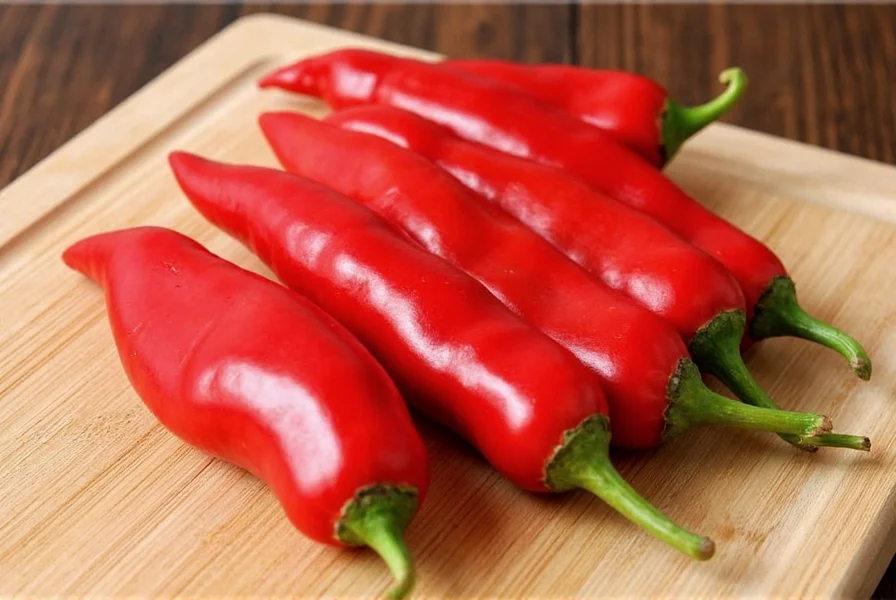
Chile de Arbol's 15,000-65,000 SHU heat range offers the perfect balance for adding bold flavor without overwhelming dishes. Whether roasting, toasting, or infusing, this versatile chili elevates salsas, marinades, and everyday meals. With proper handling and creative use, it's a kitchen essential for spice enthusiasts.

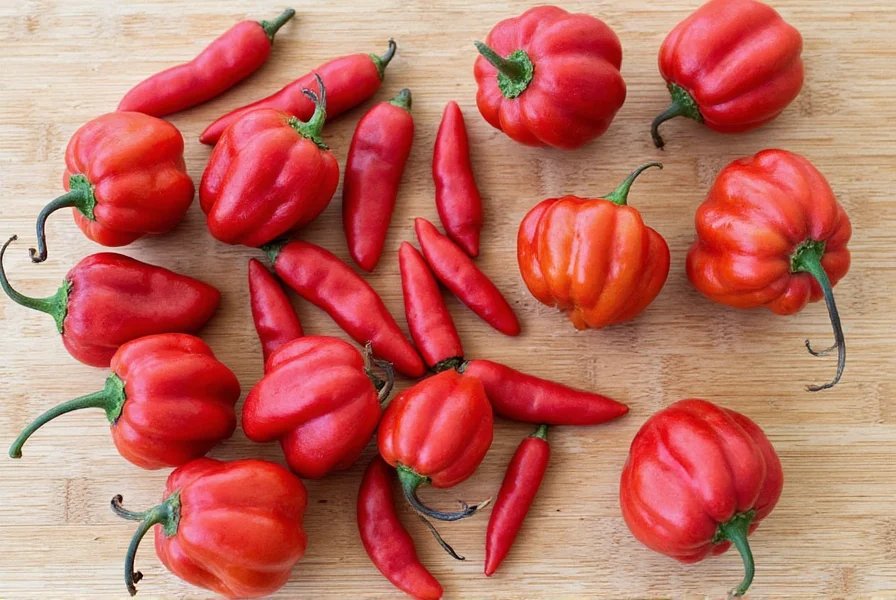









 浙公网安备
33010002000092号
浙公网安备
33010002000092号 浙B2-20120091-4
浙B2-20120091-4